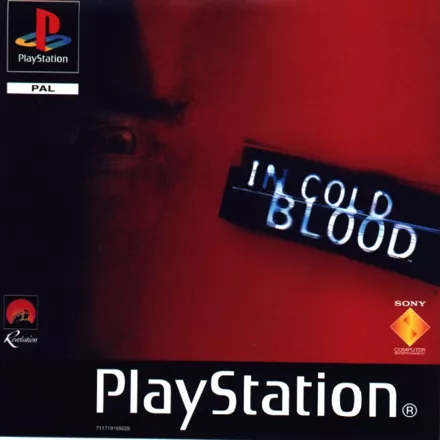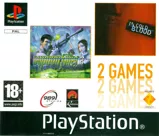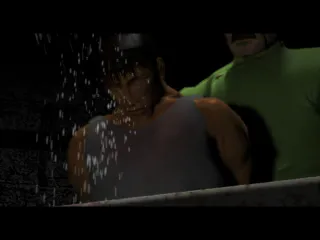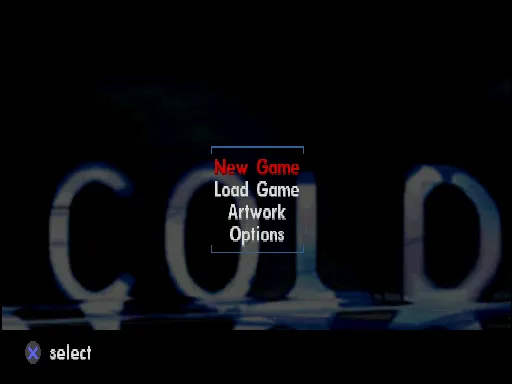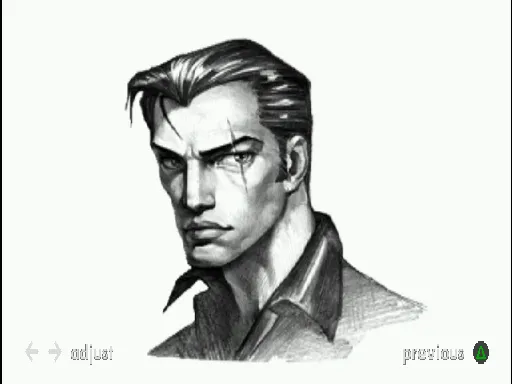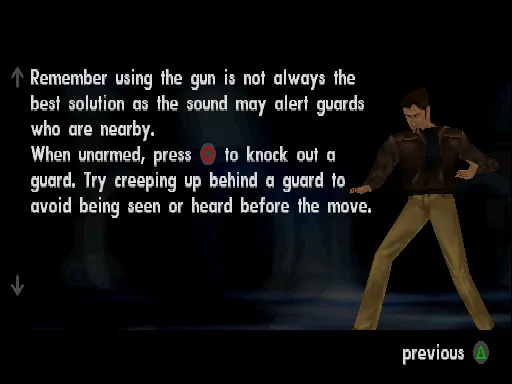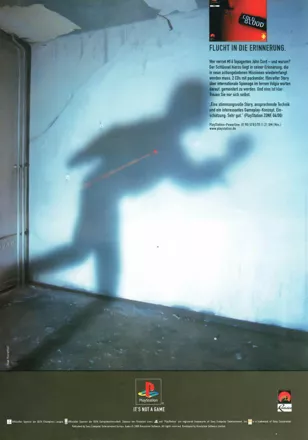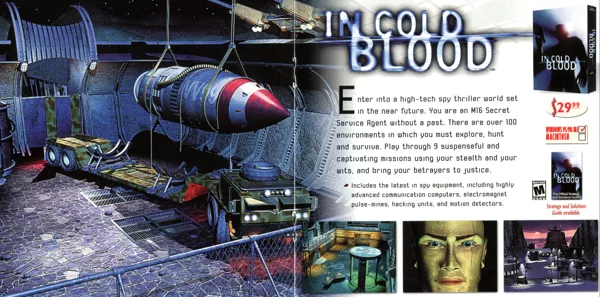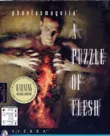In Cold Blood
Description official descriptions
In the near future, Cold War has reignited between USA and People's Republic of China. CIA has requested assistance of British MI6 to send an agent into Volgia, a fictional state under control of General Nagarov which he founded after the dissolution of the Soviet Union. The player takes control of John Cord, MI6 agent chosen for the assignment. His investigation turns out to be anything but simple.
In Cold Blood has characteristics of an adventure game, a stealth game, and a shooter. It relies on puzzle-solving but also includes action segments. Progress in the game is mostly achieved by collecting items and talking to various characters to find clues. Many conversations consist of multiple-choice dialogues. At certain points it is necessary to use stealth to proceed undetected, or attempt to solve the situation violently. Combat is fairly simple and consists of melee fighting (punches) or shooting.
Spellings
- Не зная страха - Russian spelling
Groups +
Screenshots
Promos
Credits (PlayStation version)
105 People (100 developers, 5 thanks) · View all
| Director | |
| Producer | |
| System Design | |
| Technical Programming | |
| System Programming | |
| Tools Development | |
| Character Animation | |
| Locations | |
| Character Modelling | |
| Implementation | |
| [ full credits ] | |
Reviews
Critics
Average score: 73% (based on 35 ratings)
Players
Average score: 3.5 out of 5 (based on 38 ratings with 1 reviews)
The Good
In Cold Blood is a spy action/adventure game. Haven't seen too many of those, have we? Despite the late-nineties bias towards action games, I'd guess the few "spy" games were basically licensed tin foil wrapped around Yet More Doom Clones.
In Cold Blood really does play like a spy game. The missions are all about nonchalantly sneaking into military installations, using guile, stealth and force to achieve your objectives, then getting out in one piece, all without spilling your martini.
You play the part of John Cord, an agent for the MI6 sent to investigate another agent gone missing while undercover in a uranium mine in the state of Volgia, on the coast between Russia and China. Interestingly, the game takes place in his memory as he recalls the events that led to his capture. (compare with Spider & Web)
Although I begrudge the high concentration of action at times, there is a solid adventure side to this game. There is the usual puzzle-solving; you can talk to all the non-combatants you meet, and you're not going to get anywhere unless you talk to and prod everyone and everything you meet and find. I'd say all the missions have that adventure-like feeling of being unique places, not generic levels that could be knocked out by the dozens.
In fact, the most generic things are the people; most of the characters you'll meet are either guards, who almost always shoot first and ask questions later, or they're technicians, who stroll around in identical coveralls looking technical. But in fact, this only stands out in hindsight; after all, these places are military installations, so it makes sense that everyone's wearing uniforms. Handily, Cord refuses to harm unarmed people, so there's no danger of shooting someone you'll need later.
The game is viewed from the third person, in fixed camera views, which are pre-rendered; that is, Alone in the Dark-style. Viewpoints are sometimes used to brilliant cinematic effect: I dare say there are no odd angles just to show off how 3D things are, and the point where the view suddenly changes to a security camera is nothing less than genius.
The combat model is simple and swift - you can throw punches and fire your pistol, and that's it. Cord does a lot of aiming for you, so you just wave your gun in the general direction you want perforated and pump the attack button. Cord is not a tank, however; it will take about two shots at close range to kill him, so the element of surprise is essential, and you can forget attacking more than about three people by yourself.
If you've played Thief, you may be expecting the same sort of sneaking here; staying in the shadows, tiptoeing up on people and knocking them over the head, then hiding the bodies. There's actually little resemblance between the two games. When you do have the option of sneaking up on people, you can usually just casually stroll up behind them and deliver a blow to the neck. The game doesn't distinguish between dead and unconscious bodies and you can't drag them into hiding places. Darkness doesn't seem to figure into how visible you are, only your distance to the observer and whether you're behind cover. The only thing you can do to help, really, is to crouch behind crates and such.
The Bad
There's a very power-up feeling to supplies you find on people; all ammunition will fit your gun, and using a medikit pushes your health bar up a certain amount within one second. Once you're past the first mission, you rarely talk your way past guards: There are several stretches that have an almost Doom-like feel as you walk into a room, shoot till everyone's dead, grab all their powerups, then move onto the next room.
Now, I'm not complaining that there's action, this being a spy game and all. But when you spend too much time mowing down guards, things become boring, because of the very simple combat system. When they made that design choice, they should have carved in stone that shootouts were to be used for dramatic effect, never for their own sake. Because when shootouts are used for drama, they're brilliant. Some of my favorite parts are when you walk unwittingly straight into a couple of guards and reach frantically for the fire button.
It's not all about plowing through guards and sneaking about - a couple of missions have you infiltrating places in disguise. I thought it jarring, however, that at one point in these missions you all of a sudden have to use force, without any cue that it's appropriate in that location. Also unlike Thief, people almost never warn each other; if you shoot a bunch of guards in front of a technician, he'll cower for a minute, then go back to work among the corpses, without a care in the world.
Cord wears a high-tech wristwatch computer/communicator which is used for everything relating to computers and electronics. This is good in that it provides a unified interface to it all, but it feels a bit ridiculous when it offers to repair shorted-out circuits for you. It contains a scanner which displays a map of the area, complete with people. This does make for more of a strategic feeling most of the time, but it also takes some of the edge out of it, especially in the parts that have a lot of straightforward shootouts.
Things move along pretty quickly, enhancing the action-movie feel. Of course, this means the game doesn't take very long. Took me three or four days. And since the environment is often streamlined for speed, not depth, being stuck can get boring pretty fast. Mind you, I was only really stuck once.
At several points there are time limits. I found them reasonable, but some of the control quirks become very annoying when you're under pressure - it's hard to make Cord run in stairs and you have to aim very carefully to climb ladders. But, truth be told, I don't think it would have felt as spy-movie-like without a couple of countdowns. I just wish it could have been two countdowns instead of five. In the last couple of missions, countdowns combined with somewhat sloppy testing makes for some frustration, but I was too engrossed to be massively annoyed.
The plot is, well, competent, as spy action goes. There is inventiveness both in plot and setting, and the more ridiculous plot devices are ironed out by the fast pacing.
As a final touch of class, at the end of the game you can view artwork, cutscenes and character profiles, and you can replay any mission.
The Bottom Line
Obviously, this game is not for you if you hate either adventure or action games. For the rest of us, it can be an interesting lesson in applying the aesthetics of a movie genre to a game, without sacrificing the game. I don't think I'd bother to play it twice, though.
Windows · by Ola Sverre Bauge (237) · 2002
Trivia
Development
Charles Cecil, interviewed in PC Review of November 1997, in conjunction with the release of Broken Sword II: The Smoking Mirror:
At the moment 3D games tend to look very samey. If we use the 3Dfx card then they tend to look like every other 3Dfx game. At the moment this is the very thing we're trying to decide - whether or not we'll be using 3D graphics in what we do next.
Plot
The plot of the game strangely resembles Andrew Plotkin's text adventure Spider and Web (1998). Whether or not Revolution Software nicked plot elements remains unknown.
Mobile version
In October 2000, In Cold Blood was the first popular commercial PC game to get a simultaneous release as a mobile phone game, stripped down in graphics and gameplay at hand-held standards. The game used WAP technology and was published by Ludiwap. The first episode was available for a free trial.
Information also contributed by Mo and Ola Sverre Bauge.
Analytics
Upgrade to MobyPro to view research rankings!
Related Sites +
-
Developer Interview
Just Adventure's Ray Ivey interviews Charles Cecil about In Cold Blood before its release.
Identifiers +
Contribute
Are you familiar with this game? Help document and preserve this entry in video game history! If your contribution is approved, you will earn points and be credited as a contributor.
Contributors to this Entry
Game added by Kasey Chang.
PlayStation added by Grant McLellan.
Additional contributors: Jeanne, chirinea, Sciere, mo , Klaster_1, Cantillon.
Game added February 23, 2001. Last modified February 28, 2024.
